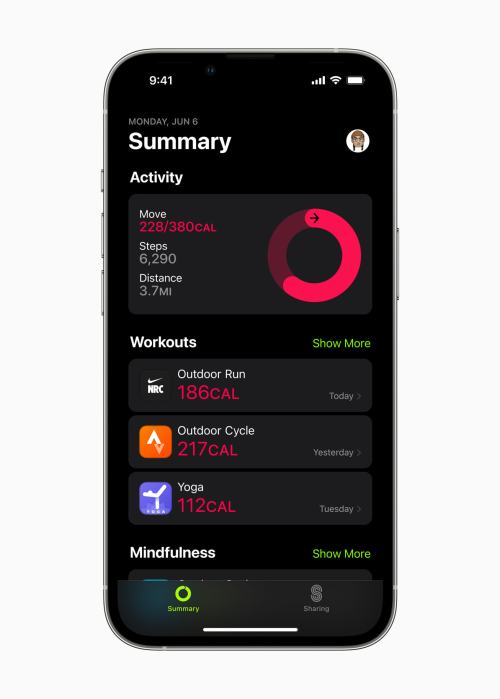Apple Is Making the Fitness App Available to All iPhone Users, No Apple Watch Required
With iOS 16, Apple is bringing the ability to close your rings to more people. The Fitness app on iPhone will be available in Fall 2022.

Saying “I closed my rings” has become shorthand for announcing “I met my workout goals today.” But it’s a target that only Apple Watch users have been able to aim for—until now.
In its upcoming release of iOS 16, Apple is bringing its Fitness app with activity tracking capabilities to the iPhone. That’s the iconic Apple Watch app that tracks movement, exercise, and time spent standing through three different rings that users work to close as they are active throughout the day.
It appears that the Fitness app on iPhone version will just have one ring, Move, which it will quantify based on how many “active calories” it determines you’ve burned.

Previously, this app was only available to Apple Watch users, since the Apple Watch tracks steps, heart rate, and other activities, and the Fitness app is where it keeps track of those metrics in satisfying ring-closing form. It’s also a portal for Apple’s subscription service that goes with Apple Watch, Apple Fitness+. (It’s unclear if bringing the Fitness app to a wider user base means that in the future, any iPhone user might be able to get a Fitness+ subscription.)
But iPhones can track your steps, the distance you walk or run, and flights of stairs climbed, too. Your iPhone already records this in the Health app. But in the Fitness app, it will quantify that movement in terms of active calories, and allow you to set a daily goal to hit. The app will also break out your workouts that it ingests from third party apps, like Strava or Runkeeper, and convert those to active calories so they count toward your goal, too. So if you keep your iPhone on you at all times, it can act as a fitness tracker. And it will allow you to share your Move ring with friends for additional motivation.
To be sure, there is not conclusive evidence that wearing a fitness tracker makes you more active or improves your health. It’s also worth noting that calorie counting as an activity metric can contribute to the proliferation of diet culture, and be inaccurate in the first place. However, according to Hopkins Medicine, using a fitness tracker and having a daily steps goal can increase the number of steps you walk per day, which can contribute to heart health. Overall, goal setting—the more specific the better—is a powerful tool to motivate you to stay active.
Digital tracking is obviously not the only way to set and meet goals. But more options that don’t require buying yet another expensive device, and let you just use your smartphone, is a win. If you want to try the app, look out for iOS 16 and download it when it becomes widely available this fall.
Oh hi! You look like someone who loves free workouts, discounts for cutting-edge wellness brands, and exclusive Well+Good content. Sign up for Well+, our online community of wellness insiders, and unlock your rewards instantly.
Sign Up for Our Daily Newsletter
Get all the latest in wellness, trends, food, fitness, beauty, and more delivered right to your inbox.
Got it, you've been added to our email list.










